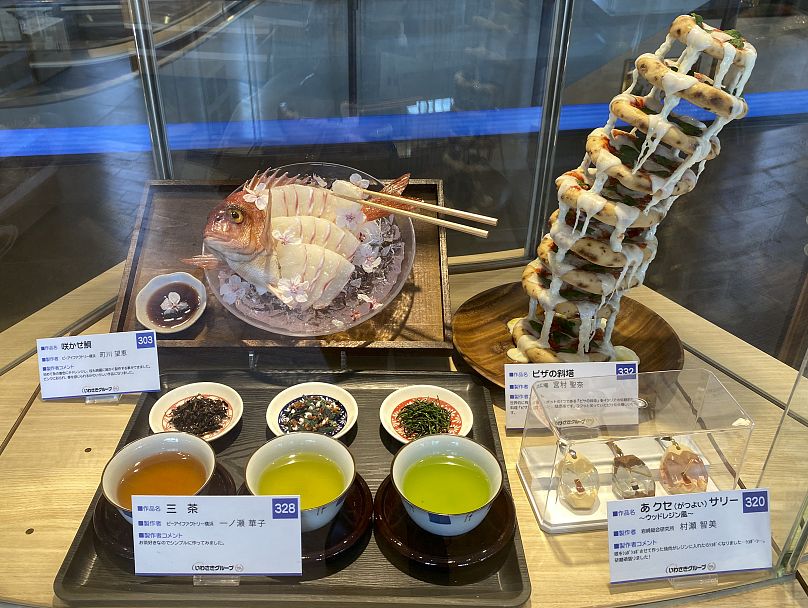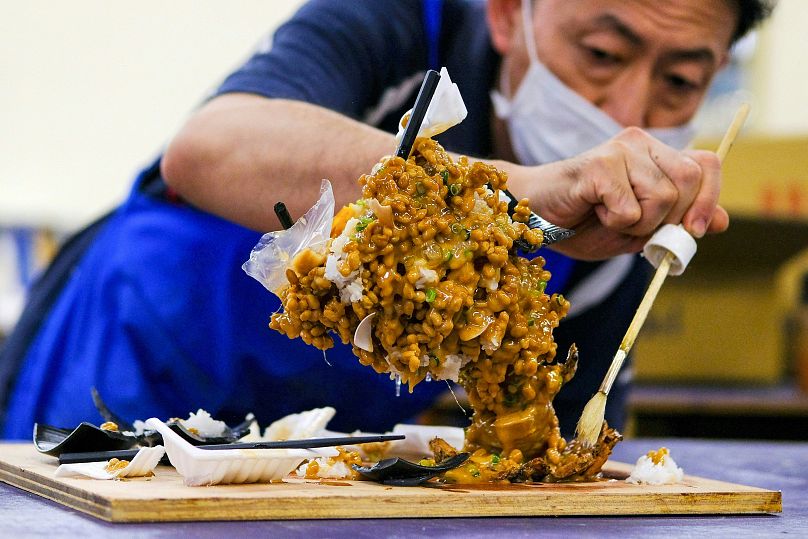A new exhibition in Tokyo is displaying super-realistic and wacky food models made from plastic. But why is this practice so popular in Japan?
In Tokyo, a unique exhibition is showcasing the weird and wonderful handmade creations of Japanese fake food artisans.
From the 'leaning tower of pizza' to a colourful dragon emerging from a dragon fruit, the exhibition aims to push the creative boundaries of plastic food making, otherwise known in Japan as 'sampuru'.
All across Japan, the windows of many restaurants display super-realistic plastic reproductions of dishes that customers can find on their menu.
Sampuru, which has become a true art form within Japanese culinary culture, has been used for nearly one hundred years.
The world's most delicious looking plastic
The exhibition features 60 food models in total, all designed by specialists from the Iwasaki Group, Japan's leading maker of sampuru.
"Normally we have to follow orders from clients. We take their views on board when we're making items," plastic food artist Shinichiro Hatasa, 57, told AFP.
But when dreaming up fun designs, "you can use your imagination. How it ends up is totally up to you," he said.
For the exhibition, Hatasa crafted a corn on the cob leisurely sunbathing on a beach.
Other creations on display include a deep-fried shrimp with four breaded legs roaming like a tiger on a mountain of shredded cabbage and also a bowl of spaghetti sitting underneath a floating bottle of ketchup.
How is fake food made?
At an Iwasaki factory in Yokohama near Tokyo, artisans first take silicone moulds of ingredients from actual meals cooked by the firm's restaurant clients.
Then they begin the pain-staking work of painting and airbrushing the samples to look as realistic as possible, from moisture droplets on a chilled glass to subtle bruises on a fruit's surface.
Fake food is a multi-million-dollar market in Japan, but sampuru production has been hit by the Covid-19 pandemic, which reduced demand for dining out.
Sampuru makers hope more tourists will soon be allowed into the country to boost the restaurant industry.













